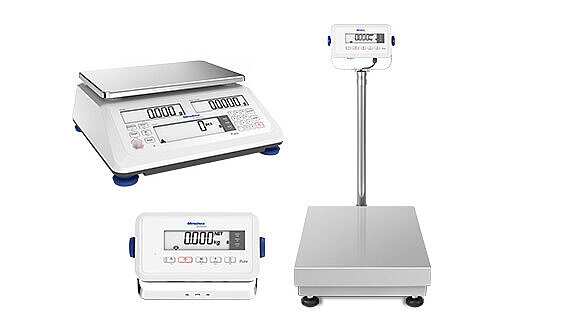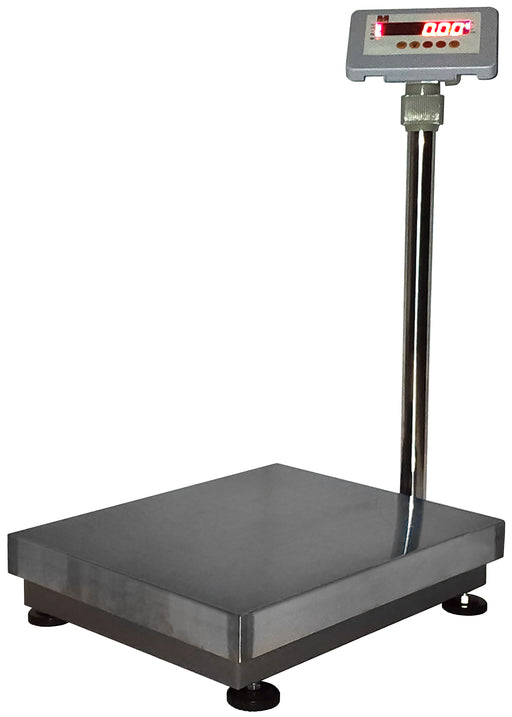How Industrial Scales Can Boost Accuracy and Productivity in Your Operations
How Industrial Scales Can Boost Accuracy and Productivity in Your Operations
Blog Article
How Commercial Scales Work: An Extensive Summary for New Users
Understanding the mechanics behind industrial ranges is important for new customers who intend to ensure precision in their dimensions. These devices rely upon lots cells and strain scale technology to transform weight into a measurable style, but the nuances of their procedure prolong past plain performance. From the numerous types available to the necessary methods for appropriate usage and maintenance, each facet plays a significant role in attaining dependable results. As we check out these parts, one should consider how these components interact to boost efficiency in varied industrial applications.
Essentials of Industrial Scales
Industrial ranges are vital tools used across different industries, consisting of manufacturing, logistics, and agriculture, to make sure precise weight measurements of hefty tons. The basic principle behind industrial scales includes the conversion of weight into a quantifiable kind that can be presented electronically or analogically. These scales use different systems, such as load cells or mechanical bars, to determine the weight of objects placed upon them.

In addition to their dimension capacities, commercial ranges are developed to withstand harsh settings, including durable construction that resists dirt, wetness, and hefty effects. Calibration and maintenance are important to guarantee precision, as also small disparities can bring about considerable financial ramifications. By recognizing the essentials of commercial scales, users can value their relevance in various industrial applications.
Types of Industrial Scales
Numerous sorts of commercial scales accommodate the diverse demands of various industries, each made to take care of specific weighing tasks with accuracy and integrity. Amongst the most usual kinds are floor scales, which are perfect for considering heavy and bulky products. These ranges normally feature large systems and can accommodate palletized products, making them crucial in stockrooms and delivery centers.
An additional kind is bench scales, which are frequently used for smaller things in manufacturing and retail setups. They offer exact measurements for items that call for precision, such as chemicals or components in assembly lines (Industrial Scales). For mobile procedures, portable scales provide flexibility and ease of transportation, suitable for fieldwork or short-lived setups
In applications needing high-capacity measurements, such as in bulk material handling, crane scales and lots cells are utilized. These scales can measure lots put on hold from a crane or various other training apparatus, making certain safety and precision throughout procedures. Additionally, specialized scales like checkweighers are utilized in assembly line to preserve quality assurance by making sure that items meet weight specifications. Each sort of industrial scale plays a vital function in enhancing operational performance and accuracy across numerous markets.
How Evaluating Mechanisms Work
Evaluating systems are vital parts that allow exact measurement of mass throughout various commercial scales. These mechanisms utilize numerous principles of physics and engineering to provide specific weight analyses, crucial for inventory monitoring, quality control, and compliance with regulative standards.
One usual kind of weighing mechanism is the lots cell, which operates the concept of stress gauges. When a lots is applied, the lots cell warps slightly, generating an electric signal symmetrical to the weight. This signal is after that exchanged a legible weight measurement by the range's electronic devices.
Another commonly used system is the mechanical equilibrium, which employs a system of weights and levers. Industrial Scales. This method depends on the principle of stability, where the weight of the item being gauged is stabilized against understood weights, allowing for direct dimension
Furthermore, pneumatic and hydraulic ranges take advantage of liquid dynamics principles to gauge weight. These systems utilize the stress put in by a lots to figure out weight, using high precision for large loads.
Appropriate Usage Methods
When using industrial scales, sticking to proper usage techniques is visit site essential for making sure accurate measurements and keeping tools integrity. It is necessary to choose the ideal range for your certain application, as ranges vary in ability advice and accuracy.
Prior to weighing, make sure that the scale is positioned on a secure, degree surface area without disruptions or vibrations. This will aid to decrease mistakes created by exterior variables. Additionally, calibrate the range according to the manufacturer's specifications before use, making sure that it is working appropriately.
When putting items on the range, disperse the weight equally to stay clear of tipping or damaging the equipment. Constantly allow the scale to support prior to taping the weight, as changes may occur during preliminary placement. For bulk materials, make use of containers that are suitable for the scale dimension to avoid overloading.
Furthermore, prevent positioning extremely warm or cool products directly on the scale, as temperature level variants can affect accuracy. Keep the considering system complimentary and tidy of particles to stop contamination and ensure dependable results. By following these strategies, individuals can make the most of the efficiency and long life of their industrial ranges.
Upkeep and Calibration Tips
Making certain the long life and accuracy of industrial ranges requires thorough upkeep and regular calibration. A preventative maintenance timetable is important; it should consist of regular examinations to determine wear and tear, especially on load cells and various other delicate parts. Routinely cleaning the range's surface area and making sure the surrounding area is without particles will certainly assist keep its honesty and performance.
Calibration is just as crucial and should be done at regular periods or whenever the range experiences substantial changes in temperature level, humidity, or physical displacement. Make use of licensed calibration weights that are deducible to national criteria for precision. File each calibration session thoroughly to track performance over time and determine any fads or recurring concerns.
Additionally, bear in mind the range's setting. Stay clear of putting it near resources of resonance, electromagnetic disturbance, or extreme temperature levels, as these aspects can adversely affect dimensions. Finally, train all drivers on correct range usage and maintenance protocols to guarantee regular efficiency and precision. By sticking to these upkeep and calibration ideas, individuals can boost the reliability of their commercial scales, ensuring optimum procedure in any setting.
Conclusion

Understanding the mechanics behind commercial scales is important for brand-new users who want to make certain precision in their dimensions.Industrial ranges are important tools made use of throughout various markets, consisting of manufacturing, logistics, and agriculture, to guarantee accurate weight dimensions of hefty loads. The fundamental principle behind commercial scales involves the conversion of weight into a quantifiable form that can be presented electronically or analogically. By comprehending the essentials of industrial ranges, individuals can value their relevance in various commercial applications.
In verdict, recognizing the procedure and maintenance of commercial scales is crucial for ensuring precise weight measurements in different applications. (Industrial Scales)
Report this page